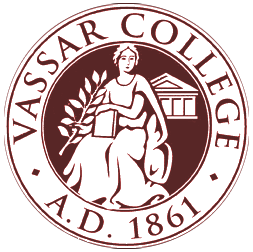College Spotlight: Vassar College
College Expert at the Five Colleges Program
Embassy Suites Minneapolis Airport
May 18, 2015
Students work hard for their Vassar College offer of admittance, and the college administration recognizes such effort. The 2,450 students govern themselves and have freedom to pick their own classes as part of an open curriculum. Founded in 1861, Vassar started life as a college for women, but after declining an offer to merge with Yale University, it became co-educational in 1961. Men now represent 45% of the student body. Vassar is located 90 miles north of New York City in Poughkeepsie (population 120,000). There’s a train station on campus.
Vassar offers a Bachelor of Arts (BA) degree in more than 50 “concentrations” or majors, including an Independent Major — in keeping with a bold and strong-willed student body and a priority placed on breadth of study. Students also have the opportunity to participate in the Self-Instructional Language Program (SILP) with courses in Hindi, Irish/Gaelic, Korean, Portuguese, Swahili, Swedish, Turkish, and Yiddish. Although each major has specific graduation requirements, the only universal requirements for graduation are proficiency in a foreign language, a quantitative reasoning course, and a freshman writing course. Some of the stated “cool courses” currently offered at Vassar are: “Women: Crime and Punishment,” “The History of Rock,” “Children of Immigration,” and “The Comics Course.” Students are encouraged to study abroad and do internships during the school year and over the summer. The Undergraduate Research Summer Institute (URSI) and the Ford Scholars Program are two summer research programs open to Vassar students.
Sports — varsity, club, and intramural — are an integral part of the Vassar experience for many students. Twenty percent of Vassar students are athletes playing on 23 Liberty League, NCAA Division III varsity teams. For those who lean towards the fine arts, The Frances Lehman Loeb Art Center is the home to 18,000 paintings, sculptures, prints, drawings, and photographs. The strengths of the collection are in the areas of Antiquities, European paintings and works on paper prior to 1900, paintings and works on paper by the Hudson River School, International Modernism, and photography.

